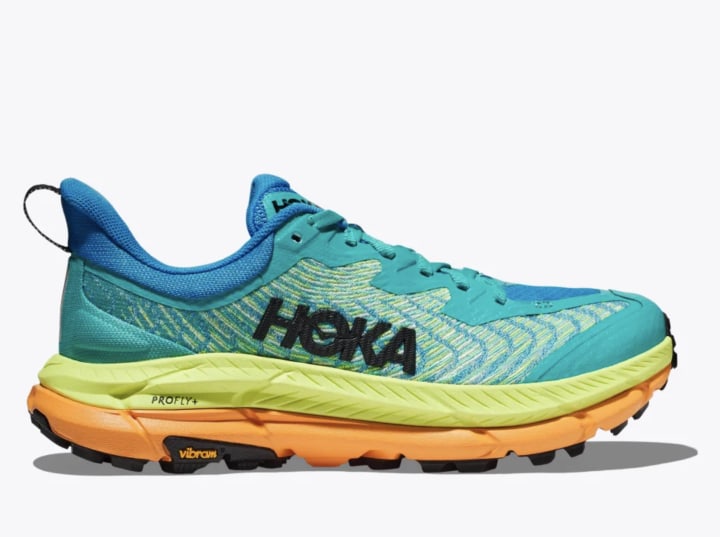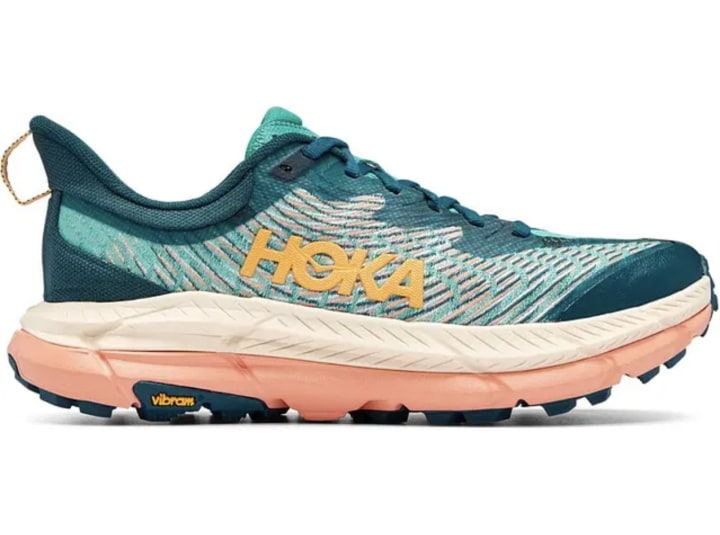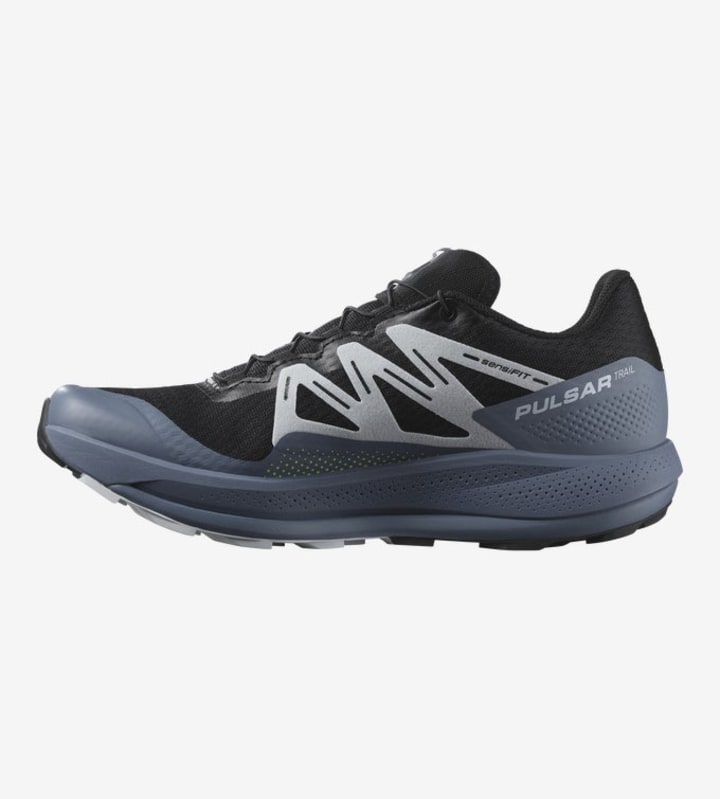Running on secluded wooded paths and dirt roads can be safer and more comfortable in shoes designed to tackle natural terrain, according to our experts. Rooted forest paths might make you think of heavyweight hiking shoes or boots, but there are other options, especially if you are looking for something lighter and more flexible.
SKIP AHEAD The best trail running shoes of 2024 | How to shop for trail running shoes
Trail running shoes offer great traction on uneven surfaces and protection against rocks and plants, according to our experts. They also typically weigh less than hiking shoes and boots. To find the best trail running shoes on the market, I spoke with medical and outdoor professionals to better understand the construction of these shoes and got their recommendations.
How we picked the best trail running shoes
We spoke with experts to better understand how trail running shoes differ from outdoor shoes and road running shoes. Combining their advice with NBC Select staff experience, we chose shoes using the following criteria:
- Fit: Getting the right fit is key, according to our experts. Our top picks have inclusive size options so that you can find your perfect fit.
- Traction: Trail running shoes typically have lugs on the bottom, or outsole, of the shoe to help grip uneven terrain, says Maggie Peikon, the manager of communications at the American Hiking Society. This is different from road running shoes, which typically have a smooth outsole. All of our recommended picks have lugs that are at least 3 millimeters tall.
- Comfort: A comfortable and accommodating shoe is essential to supporting your feet and alleviating the impact of each stride, says Dr. Miguel Cunha, podiatrist and founder of Gotham Footcare in New York. Our recommendations have insoles made with memory foam or shock-absorbing EVA (ethyl vinyl acetate) that can help to reduce impact on your joints.
The best trail running shoes of 2024
Our top-picks come from a mix of expert and staff-recommended brands like Brooks, Salomon, Altra, Hoka and more. If you are looking for a wider shoe, these brands offer models with more width options than the ones we recommend below.
Best overall: Men’s Brooks Catamount 2
Women’s Brooks Catamount 2
This is my trail running shoe of choice and comes recommended by Cunha. While I am an avid road runner and cyclist, I am a novice when it comes to trail running. Like my other Brooks shoes, these Catamounts feel comfortable, supportive and stable. I found the triangle-shaped lugs offer great traction while encouraging forward movement.
The lugs, combined with the shoe’s light weight (the lightest on on our list) led to a fast, springy feel on dirt and forest trails. The laces also never came undone. While not advertised as weather-resistant, I’ve noticed the mesh upper does repel water slightly — I wasn’t afraid to take these shoes out during damp or misty weather.
Sizes offered: 7-15 men’s, 5-12 women’s, including half sizes | Widths offered: Medium | Weight: 9.7 oz men’s, 8.6 oz women’s | Heel drop: 6 mm | Lug depth: 4mm
Most versatile: Men’s Hoka Mafate Speed 4
Women’s Hoka Mafate Speed 4
The Mafate Speed 4 has the most substantial outsole and lugs on our list. At 5mm deep, they provide excellent grip and traction when going uphill, says Cunha.
Like other Hoka running shoes, it has a structured heel that swoops up slightly when compared to other brands. From our experience with other Hoka shoes, the heel takes a little getting used to but is ultimately comfortable and supportive.
Sizes offered: 7-14 men’s, 5-11 women’s, including half sizes | Widths offered: Medium | Weight: 10.4 oz men’s, 8.5 oz women’s | Heel drop: 4 mm | Lug depth: 5mm
Staff pick: Women’s Lululemon Blissfeel Trail
NBC Select associate updates editor Zoe Malin uses these trail runners for the tame terrain in New York City parks and trails. These trail runners feel secure, sturdy and stable, especially compared to road shoes, says Malin.
They have just the right amount of cushioning to support her joints, but not so much padding that she can’t feel the ground beneath her feet — a must-have for Malin. She mostly runs on trails in warmer weather and finds her feet do not overheat or get overly sweaty in these shoes. If they do get damp, they dry quickly thanks to the well-ventilated upper. The laces also stay tight and tied.
These shoes are only available in women’s sizing.
Sizes offered: 5-12 women’s, including half sizes | Widths offered: Medium | Weight: 9.9 oz in women’s | Heel drop: 9.5 mm | Lug depth: 4 mm
Best water-resistant: Men’s Altra Lone Peak All-Wthr Low 2
Women’s Altra Lone Peak All-Wthr Low 2
These water-resistant shoes are the favorite of Matthew Rowbotham, the program manager of geographic information systems at North Country Trail Association. He uses them for trail runs and single day hikes. “These are great shoes for dealing with heavy dew on grass trails or slushy and snowy conditions,” says Rowbotham.
Note that, unlike our other recommendations, these shoes have no heel drop, meaning a nearly flat footbed. Heel drop is the difference in cushioning between the heel of the shoe and the toe of the shoe: more drop means higher cushioning in the heel compared to the toe. A 0mm drop, like in this shoe, means level cushioning throughout. The shoes are also available in a hiking boot version.
Sizes offered: 7-16 men’s, 5.5-12 women’s, including half sizes | Widths offered: Medium | Weight: 13.2 oz men’s, 10.4 oz women’s | Heel drop: 0 mm | Lug depth: 4.5 mm
Best value: Men’s Salomon Pulsar Trail
Women’s Salomon Pulsar Trail
While it may be a bit of a stretch to call a $140 pair of shoes affordable, these are the lowest-priced shoes on our list. They come recommended by Cunha, who finds them comfortable, protective and durable. This shoe is well-ventilated with a thick layer of fabric and padding in the upper. It has a single pull tab to tighten and loosen the laces — no tying required.
The rubber outsole has lugs measuring 3.5mm, smaller and less prominent than other options on our list. If traction in soft-surfaces like dirt, soil or sand is your top priority, you may prefer a shoe with deeper lugs.
Sizes offered: 7-14 men’s, 5-11 women’s, including half sizes | Widths offered: Medium | Weight: 9.8 oz men’s, 8.6 oz women’s | Heel drop: 6 mm | Lug depth: 3.5mm
How to shop for trail running shoes
Running shoe brands like Brooks, Hoka, Salomon and Saucony make multiple models of trail running shoes, meaning there can be dozens to choose from. Our experts highlighted a few things to keep in mind as you shop.
Try them on in-person
To get the best fit possible, Cunha recommends going to a local running shoe store. Specialty stores typically have well-informed staff who are knowledgeable about trail running and trail running shoes.
He also recommends trying shoes on at the end of the day, when your feet are most swollen. If they feel comfortable at the end of the day, they will most likely feel comfortable throughout a day of hiking, says Cunha.
Think about weather and terrain
Your environment can be a deciding factor in what trail running shoe to buy, or whether to buy trail running shoes at all.
Trail running shoes tend to be very breathable, says Peikon. Anyone looking to run in mostly hot, dry weather may prefer trail running shoes over other types of outdoor shoes like hiking shoes and boots.
If your natural climate is mostly freezing temperatures with lots of snow, you may want to opt for a hiking shoe or boot instead — they tend to provide more warmth than trail running shoes, says Peikon.
For wet-weather conditions, a water-resistant shoe can help keep your feet dry, but only for so long. If you are doing a multi-day (or week) hike, Rowbotham recommends a non-weatherized, breathable shoe — these will dry faster and more easily.
Tips for your first trail run
Trail running is very different from road running. It requires constant attention to the path in front of you and rapid adjustments to your gait and foot placement to navigate the terrain, says Cunha.
Beginners should start slow and small, says Peikon. Learn what you are comfortable with in terms of distance and terrain. Find trails (and trail groups) in your area to help learn what is and isn’t in your comfort zone.
Speaking from experience: if you are an avid road runner, do not expect to go your typical road speed or distance on your first trail run.
Meet our experts
At NBC Select, we work with experts who have specialized knowledge and authority based on relevant training and/or experience. We also take steps to ensure all expert advice and recommendations are made independently and without undisclosed financial conflicts of interest.
- Maggie Peikon is the manager of communications at the American Hiking Society, a Maryland-based non-profit that promotes and protects foot trails, surrounding natural areas and the hiking experience.
- Dr. Miguel Cunha is a podiatrist and founder of Gotham Footcare in New York.
- Matthew Rowbotham is the program manager of geographic information systems at North Country Trail Association, a non-profit that partners with the national park service to develop, maintain and protect the 4,800 mile North Country Trail.
Why trust NBC Select?
Harry Rabinowitz is a reporter at NBC Select who covers technology and fitness including running shoes, fitness trackers and workout earbuds. To better understand trail shoes and what makes them different, he spoke with outdoor and medical professionals and got their recommendations. He and the NBC Select team also tried top-rated trail running shoes for a month.
Catch up on NBC Select’s in-depth coverage of personal finance, tech and tools, wellness and more, and follow us on Facebook, Instagram, Twitter and TikTok to stay up to date.








